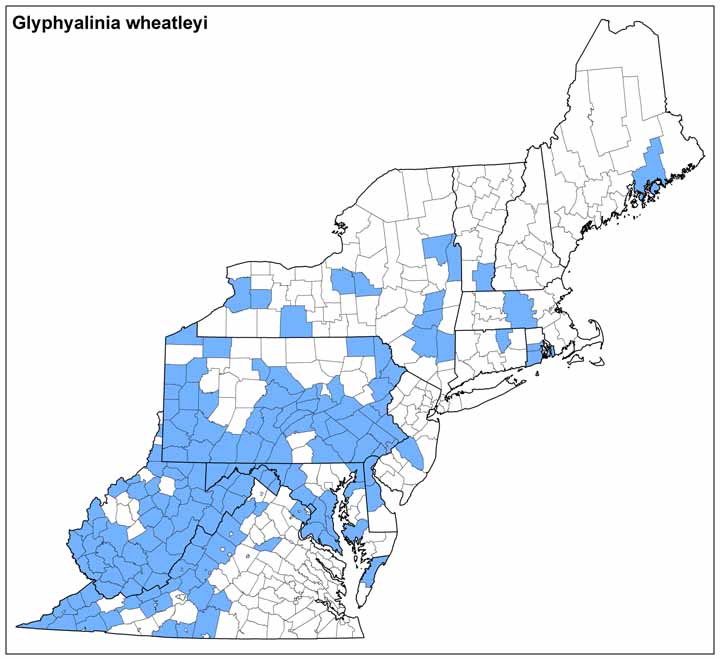Land Snails






Photo(s): Views of a Glyphyalinia wheatleyi shell © Dan Dourson.
Illustration © Kathy Schmidt from her series "Land Snails of New York State."
Click photo(s) to enlarge.
Glyphyalinia wheatleyi (Bland, 1883)
Family: Zonitidae
Common name: Bright Glyph
Identification
Width: 5.0-5.5 mm
Height: 1.9-2.3 mm
Whorls 5.0-5.2
Glyphyalinia wheatleyi is average-sized for the genus. Its shell is depressed, with a nearly flat apex and whorls that increase gradually in size, at first, and then more rapidly in the final whorl. The umbilicus is large, between one-quarter and one-fifth of the shell width. The shell is smooth with weak growth lines and microscopic spiral lines. The shell is uniformly coppery light-brown. This putative species may harbor more than one kind of cryptic animal (see Taxonomy below).
Ecology
This species is tolerant of a wide range of soil pH and is found on acidic, neutral and basic soils, in leaf litter in ravines and on moist hillsides. In Tennessee, G. wheatleyi was significantly associated with leaf litter, steep slopes, and shale and limestone habitats (Coney et al, 1982).
Taxonomy
In specimens from Fountain City, Tennessee, body color is a very dark blue-black, and internally the ephiphallus inserts on the side of the apex of the penis, which contains conical papillae (Baker, 1930), similar to species of Pilsbryna. However, Glyphyalinia burringtoni, which has been synonymized with Glyphyalinia wheatleyi, has a white body with a pearl-grey dorsum, and the apex of the penis has circular pilasters- like species of Nesovitrea, not conical papillae like the Fountain City specimens. Baker’s (1930) dissections make clear that Glyphyalinia wheatleyi as currently recognized must be a complex of species from at least two genera. Therefore, our current understanding of species ranges and habitat requirements are far too general. Accurate conservation rank assessments must await taxonomic study and clarification of the complex.
Synonyms for this species as currently designated are Retinella burringtoni, Zonites wheatleyi, Vitrea wheatleyi, Retinella wheatleyi.
Distribution
Glyphyalinia wheatleyi as currently recognized is very widely distributed from Ontario to the Gulf Coast and from eastern Oklahoma to the Atlantic Coast. In Virginia the species (complex) is known from most of the western mountain counties and some of the northeastern coastal plain counties.
Conservation
NatureServe Global Rank: G5, Secure (see Taxonomy above)
John Slapcinsky, Ken Hotopp 10/2012
Range Map (click to enlarge)


